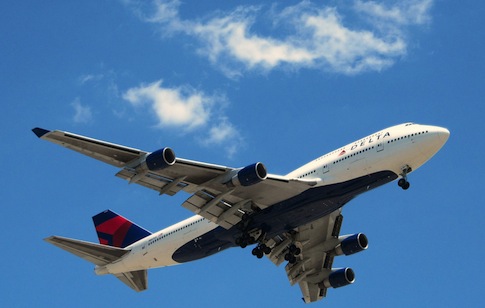By Valerie Volcovici
WASHINGTON (Reuters) - The Obama administration is expected on Wednesday to release a scientific finding that greenhouse gases from aircraft pose a risk to human health, paving the way for regulating emissions from the U.S. aviation industry.
An "endangerment finding" by the Environmental Protection Agency would allow the administration to implement a global carbon dioxide emissions standard being developed by the United Nations' International Civil Aviation Organization.
The finding had been under review at the White House Office of Management and Budget and returned to the EPA for final release.
The ICAO is due to release its CO2 standard for comment in February 2016, with the aim of adopting it later that year. But the requirement is expected to apply only to new aircraft designs certified from 2020, leaving most of the world's existing fleets unaffected for years to come.
Aviation accounted for 11 percent of energy-related carbon dioxide emissions from the transportation sector in 2010 in the United States, according to the International Council on Clean Transportation.
The EPA's ruling will mark the first step toward regulating aviation's greenhouse gas emissions, and aviation will become the latest industrial sector to be regulated under the Clean Air Act after cars, trucks and large stationary sources like power plants.
But it came only after a federal court ruled in 2012 in favor of environmental groups that had sued the EPA, saying it was obligated to regulate aircraft emissions under the law.
The airline industry favors a global standard over individual national standards since carriers operate all over the world and want to avoid a patchwork of rules and measures, such as taxes, charges and emissions trading programs.
"If you're a big airline and you're flying to 100 countries a day, then complying with all those different regimes is an administrative nightmare," said Paul Steele, senior vice president at the International Air Transport Association, the industry's main global organization.
But some environmental groups are concerned that the standard being discussed at ICAO will do little to change the status quo right now.
"The stringency being discussed at ICAO is such that existing aircraft are already meeting the standard they are weighing," said Sarah Burt, a lawyer at Earthjustice, one of several groups that sued the EPA.
Planes generally stay in service for 20 or 30 years, she added.
International Council on Clean Transportation Program Director Dan Rutherford said that to ensure real emissions reductions from airlines, ICAO should apply a carbon dioxide standard to all new aircraft delivered after 2020.
But ICAO is weighing a standard that would apply only to new designs certified after the expected application date of Jan. 1, 2020.
Such an approach would mean the standard would only cover about 5 percent of the global aircraft fleet in 2030, he said.
(Reporting by Valerie Volcovici; additional reporting by Victoria Bryan in Miami; Editing by Bruce Wallace and Lisa Von Ahn)
